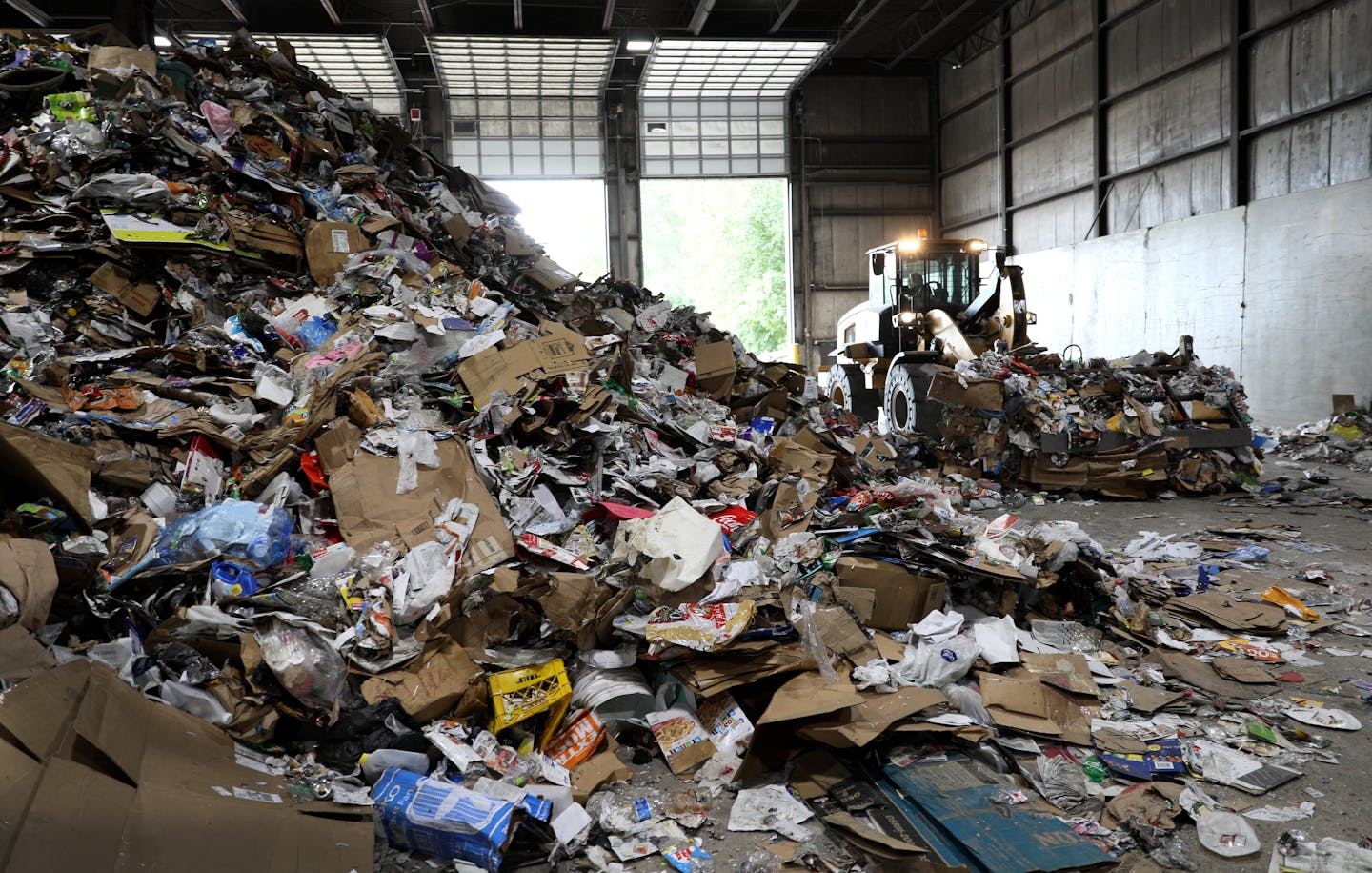Listen and subscribe to our podcast: Via Apple Podcasts | Spotify | Stitcher
More Twin Cities waste than ever before is headed to compost and recycling facilities as curbside and drop-off programs expand across the metro area.
That got Lynn Garthwaite of Bloomington wondering whether all those efforts have made a significant dent in how much of the region's waste is being landfilled.
"I've been impressed by how much we compost," Garthwaite said. "I'm always thinking about making our planet better."
She asked Curious Minnesota, the Star Tribune's community reporting project fueled by reader questions, to look into it.
The short answer is that the share of the region's waste being recycled has risen dramatically in recent years to about 47%. But the amount being landfilled also increased recently because, due to the closure of an incinerator, we are now burning less garbage.
The issue has become particularly relevant lately after several local landfills requested permission to bury additional garbage. Roughly a third of the region's trash is landfilled, some of which ends up at facilities in Wisconsin and Iowa.
The state's goal is to reach 75% recycling in the metro area by 2030. In addition to conventional recycling, the recycling figure includes yard waste, food scrap composting, food-to-livestock programs and food rescue — donating unused food to food banks.
"We see lots of opportunity to improve," said Tim Farnan, a solid waste planner at the Minnesota Pollution Control Agency (MPCA). Those numbers are "gently trending up" over time, he said.
The recycling rate of 47% in 2019, the latest year for which data was available, was up from 30% a decade prior due in part to the rapid growth of composting. Many parts of the metro area still do not have access to curbside organics recycling, however.
For waste that can't be recycled, the state prioritizes burning it over burying it in a landfill. But in 2019, a garbage burner in Elk River shut down, sending more waste instead to area landfills. The closure is one reason the MPCA is recommending that four landfills, all located in the south metro, grow their municipal solid waste capacity by a combined 5.6 million tons over the next seven years.
On a per capita basis, Twin Cities residents are producing about the same amount of waste as they were 20 years ago — roughly one ton per year. And the area's population has grown significantly.
Bill Keegan, president of Dem-Con Companies, said we're doing a really good job at recycling in Minnesota.
"Twenty-five years ago our goal was a 50% recycling rate … and we essentially achieved it three or four years ago," he said.
Dem-Con owns a recycling processing facility as well as a demolition and construction waste landfill near Shakopee. It's one of the four landfills seeking state permission to expand by accepting more household waste.
Keegan said Minnesota's recycling rate ranks about seventh nationally, though the numbers can be hard to parse out.
Minnesota also has a low contamination rate, measured by the amount of non-recyclables put in recycling bins. Here that rate is about 10%, he said, compared to the national average of 25%. The key to improving recycling rates is expanding markets for reusing the materials, he said.
"We can only recycle something if there's an end use," he said. "People oftentimes lose sight of that."
Landfills are a necessary part of our larger solid waste disposal system and likely will be for the foreseeable future, he said.
Kate Davenport, co-president of Minneapolis-based Eureka Recycling, said the right policies and incentives could markedly reduce the amount of non-recycled waste. Eureka, a nonprofit organization, processes recyclables for Minneapolis, St. Paul and several other cities.
"When we look at what's in our trash, a lot of it still is easily recyclable material," she said, adding that 50% of landfilled waste could be reused through those means.
Eureka advocates for a greater emphasis on extended responsibility, or the idea that companies should be on the hook for where their product and packaging ends up. Oregon and Maine have recently passed such laws aimed at packaging.
"We can't put all the pressure [to recycle] on the consumer," she said.
Davenport said that a truer measure of our recycling efforts could be obtained by measuring volume rather than weight — the usual metric.
"The composition of what's in our waste has changed a lot over the last 20 years," she said. The volume of our recycled waste has grown tremendously, she said, while weight has increased only slightly.
Public mistrust of whether recyclables actually end up recycled and confusion over what is recyclable — especially with plastics — are the biggest obstacles to increasing recycling, she said.
Can the metro area reach a 75% recycling rate by 2030? Peder Sandhei, principal planner with MPCA, called that goal "very challenging," but said we should still try to achieve it.
"To get over 60 [%] would be a pretty big victory," he said.
If you'd like to submit a Curious Minnesota question, fill out the form below:
Read more Curious Minnesota stories:
How much of what we think we're recycling is actually getting recycled?
How do food scraps get recycled in Minn. — and how good are we at it?
Is it safe to swim in Twin Cities rivers, or are they all too polluted?
How do cities make Mississippi River water safe to drink?
When you flush a toilet in the Twin Cities, where does everything go?






